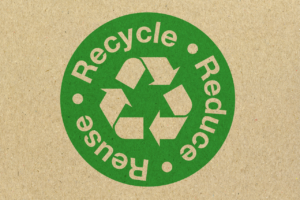Are you wondering how to recycle old outdoor gear? If you’re concerned about the impact of disposing of it in a landfill, recycling might be the solution for you. In this article, we will explore how you can recycle your old outdoor gear responsibly. We’ll provide you with insights and tips on finding recycling programs, donating options, and even repurposing ideas so that you can give your beloved gear a new lease on life. So, let’s make a positive change together and learn how to be more environmentally conscious with our outdoor gear.
Donate to local organizations
When it comes to responsibly disposing of your old outdoor gear, one of the best options is to donate it to local organizations. To get started, research local charities or nonprofits that accept outdoor gear donations. This could include organizations that focus on outdoor activities, such as hiking clubs or youth outdoor programs. Once you have a list of potential organizations, reach out to them to inquire about their donation requirements. Some organizations may have specific guidelines for the types of gear they accept or the condition it needs to be in. By donating your gear locally, you can ensure that it ends up in the hands of those who can truly benefit from it.
Host a gear swap event
Another great way to responsibly dispose of your old outdoor gear is by hosting a gear swap event. This allows you to give your gear a second life while also giving others the opportunity to acquire gear they may need. Start by identifying a suitable venue for the event, such as a community center or local park. Then, spread the word about the event through various channels, such as social media, local bulletin boards, and outdoor enthusiast groups. It’s important to establish guidelines for participation, such as specifying the types of gear that can be swapped and setting a limit on the number of items each person can bring. Lastly, coordinate the logistics for the event, including setup and cleanup, to ensure a smooth and successful swap.
Sell, trade or recycle old outdoor gear

If you’re looking to offset the cost of new outdoor gear, selling or trading or even recycle old outdoor gear can be a great option. Research online platforms or local stores that facilitate gear sales or trades. Websites like Craigslist, eBay, or specialized gear trading platforms can connect you with potential buyers or traders. Before listing your gear, take the time to clean and prepare it for sale or trade. This could involve washing clothes, polishing equipment, or repairing any minor damages. When setting a price for your gear, consider its condition, age, and market value. Alternatively, you can explore trade options, where you exchange your gear for someone else’s, allowing both parties to get what they need.
Upcycle or repurpose or recycle old outdoor gear
If you’re feeling creative and crafty, consider upcycling or repurposing your old outdoor gear. There are endless possibilities for repurposing different types of gear, from turning a tent into a hammock or transforming a backpack into a planter. To get started, research DIY projects or join online communities focused on upcycling outdoor gear. These communities often share tutorials, ideas, and inspiration for repurposing gear. Once you’ve gathered some ideas, gather the necessary tools and materials to bring your project to life. Follow the instructions provided or adapt designs to suit your preferences. Not only will you give your gear a new purpose, but you’ll also unleash your creativity and reduce waste in the process.
Recycle through specialized programs
If your old outdoor gear is beyond repair or repurposing, recycling through specialized programs is a responsible option. Research recycling programs that specifically cater to outdoor gear and equipment. Many organizations and manufacturers run recycling initiatives to help minimize the environmental impact of outdoor gear disposal. Check if your gear meets the criteria set by these programs, as some may have restrictions on the types or conditions of gear they accept. Contact the program to obtain instructions and shipping information on how to properly recycle your gear. By choosing specialized recycling programs, you can ensure that your gear is disposed of in an environmentally-friendly manner.
Repair and reuse the gear
Before considering disposal, it’s important to assess the condition of your outdoor gear and explore repair options. Many times, gear may only have minor issues that can be easily fixed, extending its lifespan considerably. Start by researching repair tutorials for the specific type of gear you have. Online forums, YouTube videos, and manufacturer websites can be great resources for finding guidance. Alternatively, you can seek professional help if you’re not comfortable making the repairs yourself. Obtain the necessary tools and materials and follow the instructions to bring your gear back to life. By repairing and reusing your gear, you’re reducing waste and saving money in the process.
Join outdoor gear swap communities
If you’re looking to swap your old outdoor gear for something new without the hassle of hosting an event, consider joining online communities dedicated to gear swapping. Start by searching for relevant communities that align with your interests and geographical location. Join the communities and familiarize yourself with their rules and guidelines. Once you’re a member, you can list your unwanted gear and browse through others’ listings to find potential swaps. When you’ve found a suitable swap, arrange the logistics of shipping or meeting up with the other member. By participating in these communities, you can find new homes for your old gear while also scoring new gear for yourself.
Contact manufacturers for recycling options
Many outdoor gear manufacturers have taken steps to be more environmentally conscious by offering recycling programs for their products. Research the manufacturers of your outdoor gear and find out if they have recycling initiatives in place. Look for information on their websites or contact their customer service directly. Be sure to identify the specific types of gear and brands that are accepted for recycling. Once you have the necessary information, reach out to the manufacturers to inquire about their recycling process. They will provide you with instructions on how to properly send your gear for recycling. By contacting manufacturers, you can ensure that your gear is recycled responsibly and supports the circular economy.
Donate to youth or community programs
If you want to recycle old outdoor gear that is still in good condition and suitable for use, consider donating it to local youth or community programs. These programs often provide opportunities for underserved populations to experience and learn about outdoor activities. Start by researching local programs that align with your values and interests. Reach out to the program organizers to understand their specific needs and requirements for gear donations. Arrange a drop-off or pickup with the program organizers to make the donation process as smooth as possible. By donating your gear to these programs, you’re not only reducing waste but also helping to create meaningful outdoor experiences for others.
Educate others to recycle old outdoor gear

To make a bigger impact on responsible outdoor gear recycling, consider educating others about the importance of this issue. Research and gather information on the environmental impact of why you recycle old outdoor gear waste, as well as the benefits of recycling and repurposing. Use this information to create educational materials, such as infographics or presentations, that you can share with friends and family. Encourage others to take action by sharing tips, resources, and the various options available for responsible recycling. By spreading awareness, you can inspire others to join the movement and make a positive difference for the planet.

